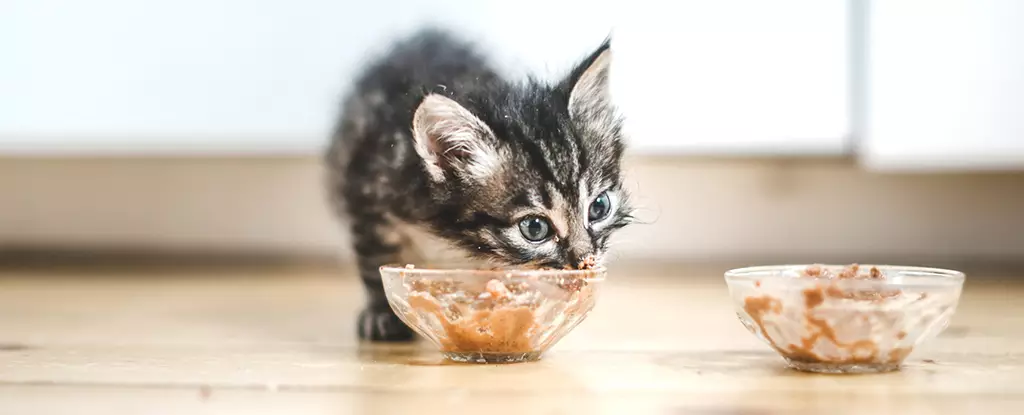The recent unfortunate events surrounding the deaths and illnesses of cats in Los Angeles County due to the H5N1 virus have raised alarm bells among pet owners and public health officials alike. With at least six confirmed cases of feline fatalities linked to bird flu, there is an urgent need to delve into the causes, implications, and precautionary measures that should be taken by the pet-owning community. This situation not only highlights risks associated with feeding practices but also serves as a cautionary tale about the potential for zoonotic diseases to spread within and beyond animal populations.
In Los Angeles County, a heartbreaking case involved a household where five indoor cats faced sudden health crises after consuming contaminated raw pet food. Unfortunately, two of these beloved pets did not survive. The premature loss of these companions emphasizes not just the grief of their human caretakers but poses critical questions regarding the safety of certain pet food products on the market. The specific brand implicated, ‘Monarch Raw Pet Food,’ was found to contain active H5N1 virus particles, underlining the potential hazards that raw diets can pose to our pets.
The symptoms displayed by these cats were alarming, with most experiencing severe respiratory issues, indicating that the strain of the virus can trigger rapid deterioration in health. The veterinary community’s swift actions in diagnosing and confirming the presence of H5N1 could potentially save other pets by fostering better awareness and prompt treatment. Such tragedies serve as a tragic reminder of the importance of comprehensive pet care and vigilance when it comes to food safety.
Historically, H5N1 primarily threatens avian species, yet its recent outbreak in domestic cats signifies a worrying trend. The transmission of this virus from birds to mammals showcases the complex interactions within ecosystems and the potential for viruses to jump species barriers. Recent confirmations of H5N1 infections in felines indicate the need for continuous surveillance and research to understand the full scope of its impact on both pet health and the ecosystem at large.
Public health agencies, such as the Los Angeles County Department of Public Health (LACDPH), affirm that while the current cases may cause concern, there is no substantial evidence indicating cat-to-cat or other human transmission at this stage. However, the risk to humans lives primarily amongst individuals who may come into close contact with affected animals or contaminated environments. The situation draws attention to the necessity for robust hygiene practices, especially for those living in close proximity to wildlife and livestock.
In light of the alarming discoveries, pet owners must adopt a multifaceted approach to ensure the health and safety of both their animals and themselves. First and foremost, the consumption of raw pet food and dairy products should be reconsidered. Although proponents of raw diets argue for their benefits, the risks, particularly in light of these recent findings, cannot be ignored. Wide-ranging recommendations include refraining from feeding animals potentially contaminated food and monitoring for any product recalls that may affect pet health.
Further, vigilance in observing signs of illness in pets is critical. Symptoms associated with H5N1 infections in felines include severe lethargy, persistent respiratory issues, and abnormal neurological behaviors. Such observations should warrant immediate veterinary consultation, particularly if the pet has had exposure to raw food sources or wild birds.
To combat the spread of H5N1, pet owners can enhance their awareness by utilizing resources from health agencies. The FDA’s Recalls, Market Withdrawals, & Safety Alerts page is a prudent tool for staying informed about potentially dangerous products. Sharing concerns and insights among fellow pet owners can create a community of informed individuals dedicated to safeguarding their animals’ wellbeing.
Additionally, any observed illness in pets, especially after consuming raw diets, should be taken seriously and reported to veterinary professionals. The cooperative efforts of pet owners, veterinarians, and public health officials will play a pivotal role in mitigating risks associated with bird flu and other zoonotic diseases.
The recent spate of H5N1 cases among cats in Los Angeles throws into sharp focus the necessity of food safety and health monitoring within pet care practices. While the incidences may appear isolated, the potential implications for zoonotic disease transmission serve as a wake-up call for pet owners everywhere. Prioritizing safe feeding practices, maintaining vigilant observation of pets, and fostering open communication within the community will be vital in combating this threat. Ultimately, safeguarding our pets also extends to the broader public health landscape, underscoring the interconnectedness of animal and human healthcare in the face of emerging infectious diseases.


Leave a Reply